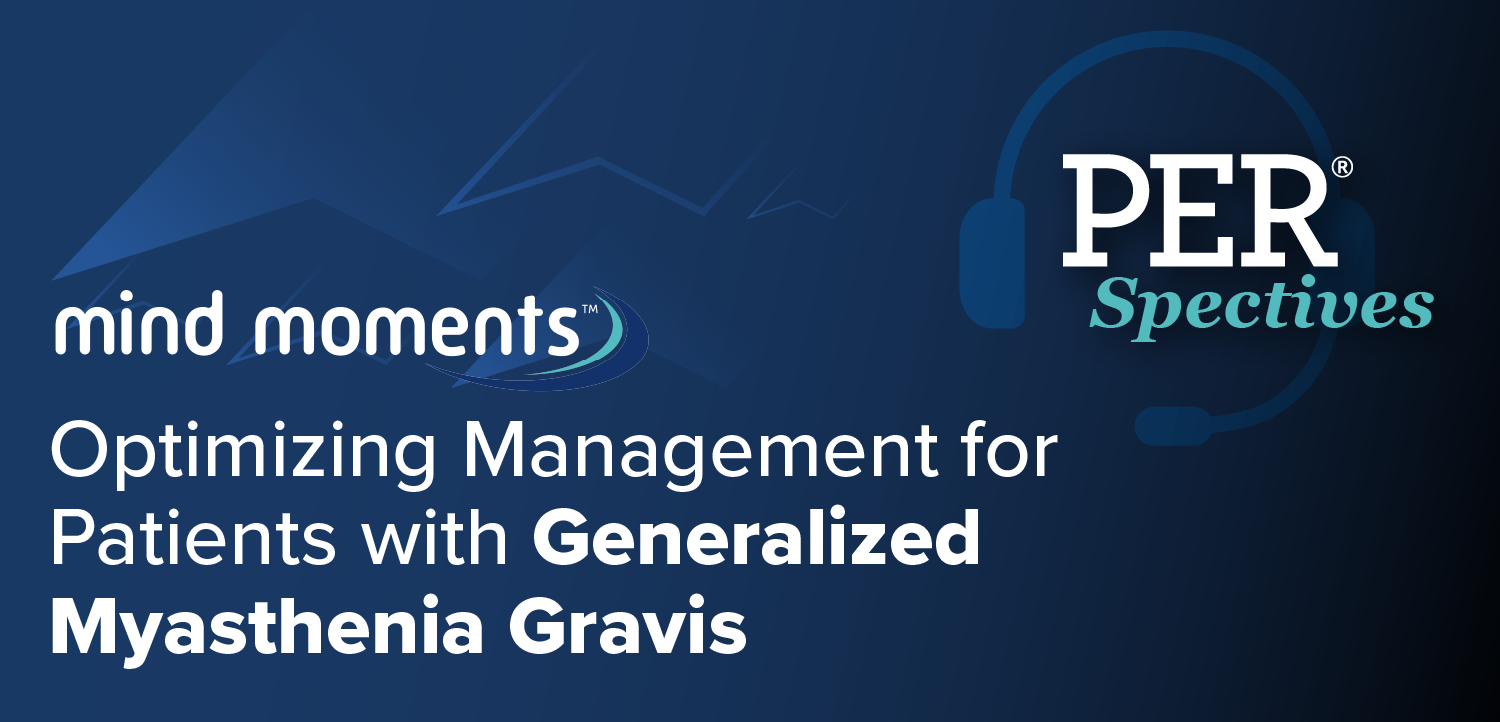
NeuroVoices: Cheryl Kyinn, PA-C, on Personalizing On-Demand Therapies for OFF Episodes in Parkinson Disease
A physician assistant specializing in Parkinson disease shared key clinical considerations for selecting and educating patients about on-demand therapies for the movement disorder.
Although levodopa is considered the cornerstone treatment in Parkinson disease (PD), its long-term use may be limited by motor complications and the inability to slow neurodegeneration. Early in treatment, motor control is strong, but over time, striatal changes can cause dopamine levels to rely entirely on external sources, leading to OFF episodes. Current strategies aim to optimize dopaminergic stimulation to better mimic natural, tonic dopamine activity through pharmacologic, nonpharmacologic, adjunctive, rescue, and device-aided approaches.1
At the recently concluded 4th Annual
In a new iteration of
NeurologyLive: How should clinicians approach determining which on-demand therapy may be best suited for a patient experiencing OFF episodes?
Cheryl Kyinn, PA-C: It's very similar to how you would make any medication choice for a patient. The first thing is the baseline characteristics of a patient. Do they have other comorbidities? Because, let’s say, the 2 options are quite different and have different adverse effect profiles, so you want to first look at that.
For instance, if you’re doing an apomorphine subcutaneous injection, that might have a little bit more susceptibility to hypotension and nausea. If someone’s already hypotensive, like many of our patients with PD, you probably wouldn’t go for that one. But let’s say a patient has a comorbidity of COPD, you’re probably not going to go with inhaled levodopa powder, because they probably can’t inhale it. That's 1 key factor.
Of course, you also have patient preference. Maybe patients are needle-phobic, or maybe patients honestly, they can’t get over the administration adverse effects. I think the number one thing is patient choice. First of all, I get a lot of needle-phobic patients, so that’s easy off the bat. And then again, their comorbidities as well.
What findings have maybe most influenced decision-making when it comes to on-demand treatment for PD-related off periods?
The key thing is that we know all of our oral medications run into the gastrointestinal dysfunction issues. Of course, seeing how these are delivered and that they bypass the GI tract that's a huge thing.
I think one of the most interesting studies was the open-label study for morning akinesia. I mean, that’s huge. We don’t have a lot of stuff—actually hardly anything—that helps with that, right? I actually tell my patients, just put your first pill on your bedside, and as soon as you get up, just reach over and swallow it. But again, you have the gastrointestinal dysfunction. The study with morning akinesia was very helpful and great for us clinicians to know that there is an option for this very tough symptom that patients experience.
For the inhaled levodopa powder, I think it’s a little bit easier to use because you don’t have to do a needle. I did make a joke that it’s kind of similar to smoking but it kind of is. When I’ve seen patients do it, I’m like, it kind of looks like that. But I think the ease of use is helpful, and you see the improvement in the UPDRS score quickly, within 10 minutes. But I guess that’s the other point:, both of them show that T-max concentration within 10 to 20 minutes, and that’s a big factor in wanting to use these on-demand therapies for OFF times.
In your experience, what key factors could help with ensuring effective and consistent use of these on-demand therapies for patients?
I think education, education, education, and setting expectations. For instance, if you don’t tell a patient that they might have the cough issue with the inhaled levodopa powder, they will—when they first encounter that cough. First, they’re going to do it wrong, and they’re going to assume it’s like any other inhaler that they’ve seen like an asthma inhaler where you take a big puff and they’ll cough it all out. Not only, 1, do they have the adverse effect, 2, they’re going to cough it all out and not even get the therapeutic effect of the medication.
Same thing with apomorphine. I think if you set the precedent that, yes, there’s a possibility you can have hypotension and nausea, especially because there’s no current antiemetic therapy that we can give to counter that, at least if they know about it and it happens. They’re not going to be completely caught off guard and then just choose to discontinue either of the medications.
Setting good expectations, educating the patient on what could happen, and letting them know that if it happens, it’s okay it’s not going to be permanent. It’s going to be very short and brief and mild to moderate, I guess, based off of clinical trials. You’ll get over it, and if you don’t like it, then you don’t have to do it again. That’s the first part of it. And luckily, the companies also I think send nurses to the patient’s home to educate them about that as well, and to help them administer their first couple of doses. So hopefully there’s that continuity of care.
What clinical signs would prompt you to consider switching a patient with PD to a different levodopa formulation?
Honestly, I think from the get-go, based off all the clinical data that we have now, the preference is showing that ER formulations are much preferred. All the data suggests that, unfortunately, even though IR levodopa is great and cheap and effective, long-term use of this volatile pulsing of the medication is going to cause issues over time.
We definitely see that with our patients who’ve had long-standing PD where we feed into the motor fluctuations. I think presenting patients with that data, if we can, we should start them on an ER formulation. But let’s say they are on an IR formulation then, when they start experiencing these motor fluctuations because we know it’s a question of when, not a question of if that, for sure, is a reason. If accessibility wasn’t an issue and cost wasn’t an issue, for sure, as soon as they start experiencing motor fluctuations, we should switch to an ER formulation if possible.
How do you go about the decision-making process with the patient for treatment?
I always try to tell my patients when we’re together, I’m here to provide you with the information, and I will guide you on what I think might work best for you but ultimately, they’re in the driver’s seat. It’s a full-on conversation that we’re having. It’s not a one-sided, "I tell you what to do" situation. I’ll even tell patients, "I’m not your mom—I can’t make you do anything," It’s all up to you. This is your life, the life that you’re living. But it is an open discussion between clinical provider and patient. And I tell them, we’re trying to optimize your quality of life. And the decision-making process is 2-fold. I provide information, and then we, together, pick what’s best for your life, what fits into your lifestyle, with the ultimate goal of improving quality of life.
Transcript edited for clarity.
REFERENCES
1. Masood N, Jimenez-Shahed J. Effective Management of "OFF" Episodes in Parkinson's Disease: Emerging Treatment Strategies and Unmet Clinical Needs. Neuropsychiatr Dis Treat. 2023;19:247-266. Published 2023 Jan 25. doi:10.2147/NDT.S273121
2. Kyinn, C. Conquering Off Episodes With On-Demand Therapies. Presented at: ATMRD; June 27-30, 2025; Washington, DC.
Newsletter
Keep your finger on the pulse of neurology—subscribe to NeurologyLive for expert interviews, new data, and breakthrough treatment updates.




































